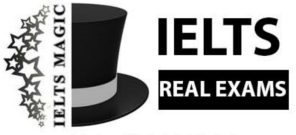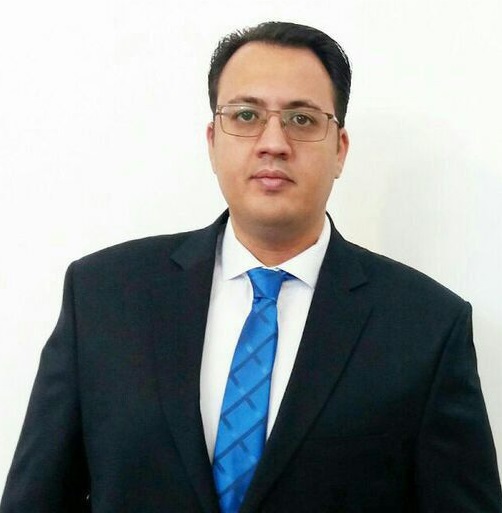PASSAGE 3 An enterprise education programme in Hong Kong
26 مهر 1403 1403-07-26 9:27PASSAGE 3 An enterprise education programme in Hong Kong
READING PASSAGE 3
You should spend about 20 minutes on Question 27-40 which are based on Reading Passage 3 below.
An enterprise education programme in Hong Kong
The Teen Entrepreneurs Competition (TEC) is an enterprise education programme developed by the Business Studies Division at the Hong Kong Institute of Education (HKIEd) the major training body for school teachers in Hong Kong. It has the following key objectives: to enable secondary school business students to integrate their conceptual learning with real business practices: to promote a collaborative approach to enterprise education; and to build up formal links between HKIEd, schools and entrepreneurs.
Among the various enterprise programmes in Hong Kong. TEC is unique as it is principally organised by pre-service teachers on their B.Ed course. At the beginning of the academic year, these pre-service teachers form an executive committee. They are advised by tutors in the Business Studies Division and some of them are selected to act as TEC instructors. These instructors attend a series of training sessions that cover the concepts of entrepreneurship and practical skills for business start-ups. They are then sent to the schools to co-work with teachers and meet the competition teams.
Over a three-month period, the teams are required to brainstorm an innovative business start-up that is suitable for the Chinese New Year. They then draft a business proposal, tum this into a real business by sourcing or creating their products, and set up a market stall at the HKIEd campus. The teams’ business ideas and sales performance are assessed by an adjudicating panel that is made up of entrepreneurs, school principals, teachers, students and customers.
TEC has run annually for three years and has received favourable responses from both the education and local communities. In a recent evaluation survey, most participants ranked themselves in the satisfactory performance category and considered they had gained practical skills to run a small business. A typical response was: ‘I understand enterprise better and have developed a good team spirit.’ Moreover, positive views were obtained from some participants despite the fact that they had not had a good experience. For example, one participant reflected: ‘T initially received a lot of criticism and even thought about giving up.
However, I eventually learned to work in a systematic way. The positive evaluation outcomes came not only from participants but from other stakeholders as well. The adjudicators commented that most of the business plans demonstrated an adequate understanding and application of entrepreneurship in the context of seasonal sales. In addition, the school teachers stated that TEC was a good platform in that it enabled their students to engage in business. They felt the zero drop-out rate strongly supported their views on the promising future of TEC.
The positive post-activity evaluations were indications of the programme’s success, but an assessment of how well TEC met its objectives will clarify how sustainable it is as an enterprise education programme. One objective was to provide participants with the opportunity to integrate conceptual learning with real business situations. The research studies that were carried out indicated that the school students taking part in TEC were able to apply entrepreneurial knowledge gained in their studies to the authentic business situations created by the programme. In fact, participants not only succeeded in doing this, but also increased their overall understanding of business enterprise.
However, the financial and manpower support required by this kind of practical experience is beyond the resources of many schools. In fact, most teachers have little choice but to adopt a limited range of teaching methods, mostly based around traditional ones. Moreover, the dominant examination-orientated culture leads teachers to concentrate on written tests rather than explore practical experiences. TEC, however, is able to empower participants to be active learning agents, and provides a feasible means of filling the gap in educational provision.
The research studies also demonstrated that the objective of promoting a collaborative approach to enterprise education was met. From the very start of the programme considerable emphasis was placed on collaboration and teamwork. The participants had to cope in a learning environment which was full of ever-changing challenges, and this meant they had to find ways to deal with events as they occurred. This involved participants taking responsibility for their assigned role within the team and working closely with other team members. Moreover, at certain points, participants had to collaborate with other TEC stakeholders such as entrepreneurs and members of the local community.
The third aim was to develop a network between business and the business education field. Local entrepreneurs acted as sponsors and had an important role in ensuring the programme financially viable. The network broadly consisted of three tiers. The first tier was made up of key players, including the participants, the teachers, the instructors and the executive committee. There was close collaboration amongst these groups: members of the committee communicated regularly with instructors to disseminate information to participants, and the school teachers and instructors met often to provide suitable guidance to participants. The second tier was an organisational level that mainly consisted of the participating schools and the HKIEd. The contribution of the teacher training institute was to provide logistical support for implementing the programme, including the provision of a venue and a credible point of contact between the schools and the committee. Finally, the third tier consisted of the entrepreneurs who served as judges or sponsors, community groups, the local press and the customers themselves. The positive responses of all these stakeholders and their continuing support is a vote of confidence for the sustainability of TEC in Hong Kong.
Questions 27 – 32
Complete the summary using the list of words, A-K, below
Write the correct letter, A-K, in boxes 27-32 on your answer sheet
The Teen Entrepreneurs Competition – an outline
The Teen Entrepreneurs Competition (TEC) is an enterprise education initiative developed by the Hong Kong Institute of Education (HKIEd). The executive committee that organises the event is made up of pre-service teachers who receive 27…………. from HKIEd staff.
The 28…………. of the programme include giving secondary school students the opportunity to get involved in authentic business tasks and developing a 29…………. consisting of the institute, local business people and schools. The teams that take part receive practical support from a group of instructors. Before meeting the teams. The instructors go to 30…………. where they develop practical skills and are taught a range of entrepreneurial 31………….
The competition requires teams to come up with a new business 32…………. for the Chinese New Year. The teams also write business plans and purchase or make their products. The judges, who include business people and education professionals. consider their business performance and sales.
A management B venture C resources D workshops E companies
F guidance G finance H theories I outcome J aims K network
Questions 33 – 36
Do the following statements agree with the claims of the writer in Reading Passage 3?
In boxes 33-36 on your answer sheet, write
YES if the statement agrees with the claims of the writer
NO if the statement contradicts the clams of the writer
NOT GIVEN if it is impossible to say what the writer thinks about this
33 The questionnaire results indicated that relatively few participants were satisfied with their performance in TEC.
34 One participant was initially tempted to withdraw from the competition.
35 School teachers believed that some of their students were better suited to taking part in the competition than others.
36 School teachers thought that participants’ sustained interest in the programme confirmed their positive opinion of it.
Questions 37- 40
Choose the correct letter, A. B, C or D.
Write the correct letter in boxes 37-40 on your answer sheet.
37 In the sixth paragraph, what point does the writer make about the TEC programme?
A The programme cabled participants to put theory into practice.
B There is little agreement on how sustainable the programme is.
C The participants’ evaluations of the programme were inconsistent.
D The programme showed how little participants knew about business.
38 What does the writer say about the objective of promoting a collaborative approach?
A Different participants adopted different strategies.
B The results of the research studies were inconclusive.
C The nature of the situations ensured that participants co-operated.
D Some participants were unable to develop the relevant skills.
39 What does the writer say about TEC’s connections with the business world?
A Entrepreneurs offered valuable professional advice.
B There were a few communication problems with the entrepreneurs.
C Some entrepreneurs were unwilling to provide a suitable venue.
D Entrepreneurs helped to make the programme workable in terms of costs.
40 According to the final paragraph, the Hong Kong Institute of Education
A has voted to continue offering the programme.
B was central in securing support from community groups.
C has improved its reputation as a result of the programme.
D was a useful link between the other contributors.
27. F guidance
Explanations: Pre-service teachers who form the executive committee receive “guidance” from HKIEd staff. This is mentioned in paragraph 2: “They are advised by tutors in the Business Studies Division.”
28. J aims
Explanations: The key objectives or “aims” of the programme are mentioned in paragraph 1: “It has the following key objectives…”
29. K network
Explanations: The development of a “network” consisting of the institute, local businesses, and schools is explained in paragraph 9: “The third aim was to develop a network between business and the business education field.”
30. D workshops
Explanations: The instructors attend “workshops” to develop practical skills, as explained in paragraph 2: “These instructors attend a series of training sessions…”
31. H theories
Explanations: The instructors are taught entrepreneurial “theories” before working with the teams, as discussed in paragraph 2: “…that cover the concepts of entrepreneurship.”
32. B venture
Explanations: The competition requires teams to come up with a new business “venture” for the Chinese New Year, as mentioned in paragraph 3: “The teams are required to brainstorm an innovative business start-up.”
33. NO
Explanations: The questionnaire results showed that “most participants ranked themselves in the satisfactory performance category” (paragraph 4). This contradicts the statement.
34. YES
Explanations: One participant mentioned that they “even thought about giving up” (paragraph 4), which confirms the statement.
35. NOT GIVEN
Explanations: There is no information in the passage about school teachers believing that some students were better suited to the competition.
36. YES
Explanations: School teachers felt that the “zero drop-out rate strongly supported their views on the promising future of TEC” (paragraph 5), which confirms their positive opinion.
37. A
Explanations: The writer makes the point in paragraph 6 that TEC allowed participants to apply “entrepreneurial knowledge gained in their studies to the authentic business situations.”
38. C
Explanations: In paragraph 8, the writer states that “the learning environment was full of ever-changing challenges,” which meant that participants “had to find ways to deal with events as they occurred,” ensuring cooperation.
39. D
Explanations: The writer mentions in paragraph 9 that entrepreneurs “ensured the programme was financially viable,” making it workable in terms of costs.
40. D
Explanations: In paragraph 9, the writer explains that the HKIEd provided “a credible point of contact between the schools and the committee,” acting as a useful link between contributors.







